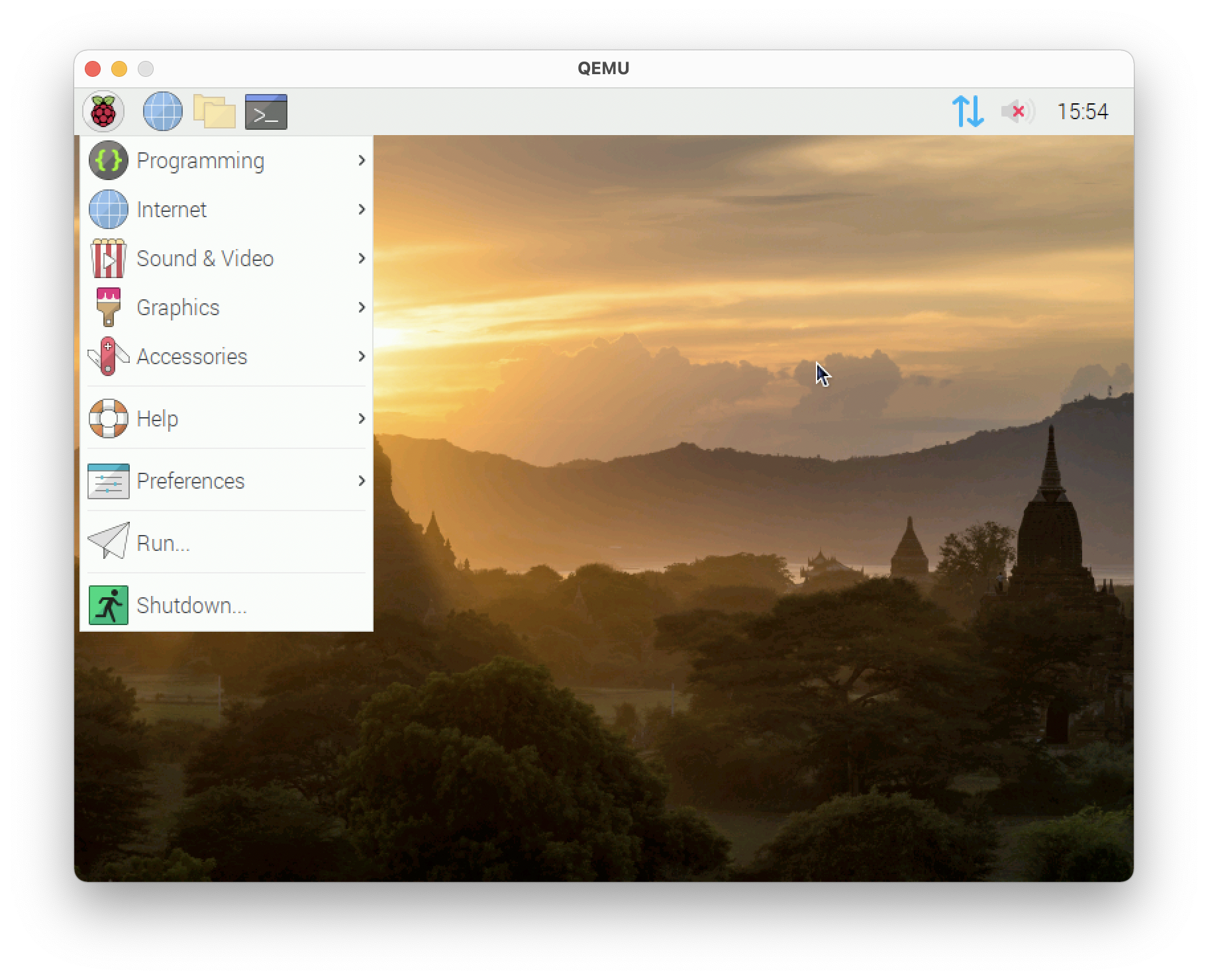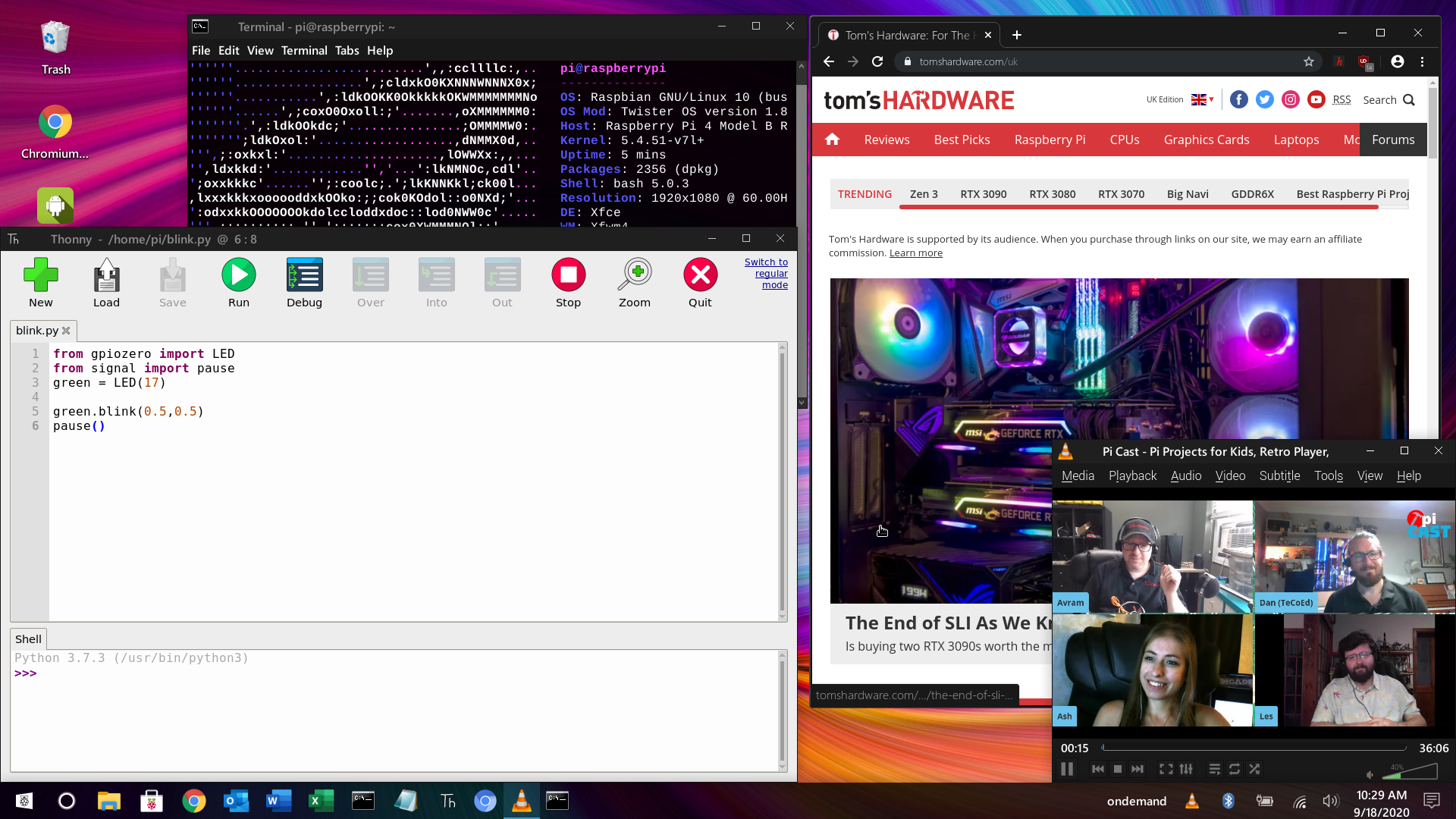

- #RASPBERRY PI MAC EMULATOR DRIVERS#
- #RASPBERRY PI MAC EMULATOR PORTABLE#
- #RASPBERRY PI MAC EMULATOR FOR ANDROID#
- #RASPBERRY PI MAC EMULATOR ANDROID#
- #RASPBERRY PI MAC EMULATOR SOFTWARE#
#RASPBERRY PI MAC EMULATOR ANDROID#
In addition to a Raspberry Pi 3 computer and an Android device, you need: What equipment do you need to run OpenAuto on Raspberry Pi? The people working on this project did an amazing job in reverse engineering the AndroidAuto protocol and creating the protocol buffers that structurize all messages. Note: The Android Auto protocol is taken from another great Android Auto head unit project called HeadUnit. And the build system OpenAuto is using is CMake. It provides support for OpenAuto's multimedia, user input, and graphical interface.
#RASPBERRY PI MAC EMULATOR SOFTWARE#
You can use it to build your own head unit software for your desired platform.Īnother very important library used in OpenAuto is Qt. The aasdk library is designed to be fully reusable for any purposes related to implementation of the head unit software. OpenSSL is used for encrypting communication. It is required for high efficiency and scalability of the head unit software. Boost provides support for the asynchronous mechanisms for communication. libusb implements communication between the head unit and an Android device (via USB bus). aasdk library is built on top of the Boost, libusb, and OpenSSL libraries. The core of the OpenAuto is the aasdk library, which provides support for all Android Auto features. What software libraries does the project use? Support of MacOS is being implemented by the community and should be available soon.
#RASPBERRY PI MAC EMULATOR PORTABLE#
Thanks to highly portable libraries like Boost and Qt, OpenAuto can be built and run on the Windows platform. Most of the Linux-based platforms provide support for hardware video decoding directly in GStreamer. Taking advantage of the fact that the Raspberry Pi operating system is Raspbian based on Debian Linux, OpenAuto can be also built for any other Linux-based platform that provides support for hardware video decoding. I used OpenMAX IL and IL client libraries delivered together with the Raspberry Pi firmware to implement video hardware acceleration.

Thanks to this, Android Auto projection on the Raspberry Pi 3 computer can be handled even using fps resolution.

For successful deployment, I needed to implement support of video hardware acceleration using the Raspberry Pi 3 GPU (VideoCore 4). My target platform for deployment of the OpenAuto is Raspberry Pi 3 computer. OpenAuto supports both touch events and hard keys. Another function of the head unit is providing user inputs. This is what the head unit software mostly does-it decodes the H.264 video stream and PCM audio streams and plays them back together. Projection of Android Auto on the head unit is accomplished using the H.264 codec for video and PCM codec for audio streaming. All magic related to the Android Auto, like navigation, Google Voice Assistant, or music playback, is done on the Android device. Head unit software is a frontend for the Android Auto projection. It emulates the head unit software and allows you to use Android Auto on your PC or on any other embedded platform like Raspberry Pi 3. In a nutshell, OpenAuto is an emulator for the Android Auto head unit. Some responses have been edited for conciseness and clarity. OpenAuto's creator, Michal Szwaj, answered some questions about his project for. With OpenAuto, developers can test their applications in conditions similar to how they'll work on an actual car head unit. A new, open source tool named OpenAuto is hoping to make that easier by giving developers a way to emulate Android Auto on a Raspberry Pi.

#RASPBERRY PI MAC EMULATOR FOR ANDROID#
While there are many apps available for Android Auto, developers are working to add to its catalog. Android Auto can also run as an app on an Android smartphone, enabling owners of older-model vehicles without modern head unit displays to take advantage of these features.
#RASPBERRY PI MAC EMULATOR DRIVERS#
Android Auto's driver-friendly interface, with larger touchscreen buttons and voice commands, aims to make it easier and safer for drivers to control navigation, music, podcasts, radio, phone calls, and more while keeping their eyes on the road. In 2015, Google introduced Android Auto, a system that allows users to project certain apps from their Android smartphones onto a car's infotainment display.


 0 kommentar(er)
0 kommentar(er)
